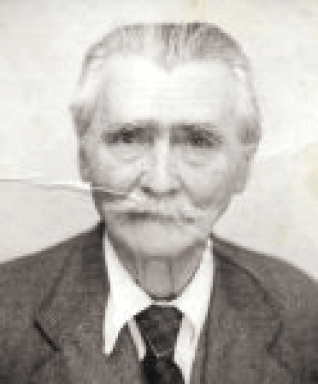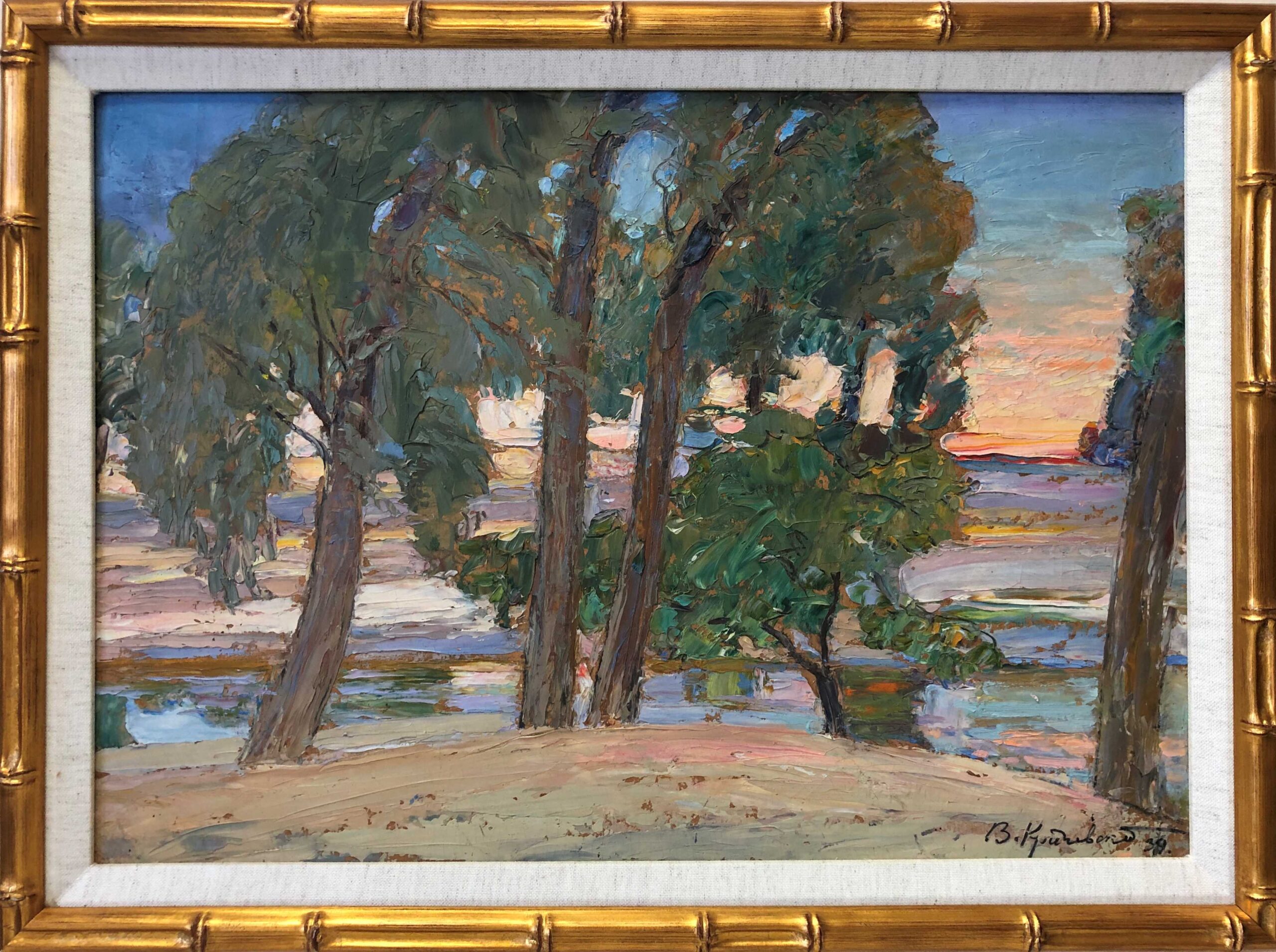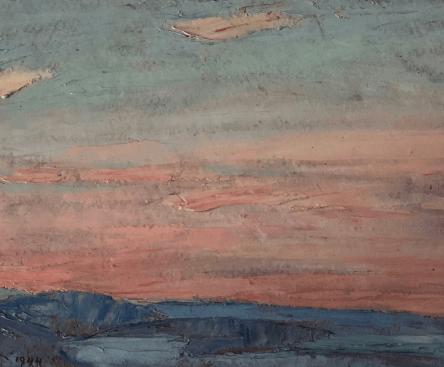Vasyl Hryhorovych Krychevsky
(January 12, 1872 in Lebedyn - November 15, 1952 in Caracas, Venezuela)
Vasyl Hryhorovych Krychevsky was born in 1872 in Lebedyn, Kharkiv region. Outstanding art scholar, architect, painter, graphic artist, set designer, and a master of applied and decorative art; brother of another well known Ukrainian artist Fedir Krychevsky. Vasyl H. Krychevsky received formal education at Kharkiv University. He developed great interest in Ukrainian folklore and art history. The artist was a founder and the first president of the Ukrainian State Academy of Arts established in 1917. After the World War II Vasyl H. Krychevsky lived briefly in Paris before immigrating in 1947 to Venezuela. Vasyl H. Krychevsky’s paintings were influenced by French impressionism and Ukrainian (and specifically Slobozhanshyna region) folk ornaments and culture. Vasyl H. Krychevsky is one of the founders of modern Ukrainian book design. At Mykhailo Hrushevsky`s request he designed the state coat of arms of the Ukrainian National Republic incorporating Tryzub (Trident) as well as a number of bank notes. Vasyl Hryhorovych Krychevsky died in 1952 in Caracas, Venezuela.
Interview with Anton S. Kandinsky conducted by Alex Demko on 4/28/2010.
I am a product of the socialist realist school of painting. When I came to the United States, I realized how weak we, Russians, were in the face of the world’s art processes. I understood that artists in the United States are an integral part of international art movements while we, Russians, are not. When I got here, I looked at installations and performance art as if it was something barbarian. Today, I understand that it is very sophisticated, an integral part of contemporary art.
When I studied works by Warhol, I was really impressed with his image of Mao. I was unconsciously drawn to the Mao painting after seeing it at the Metropolitan Museum of Art. Is it a sarcastic caricature? Is it making fun of this political figure? I see that Warhol had a certain attitude towards Mao. Much later, after I saw works by contemporary Chinese artists (Yu Minjun, Zhang Hongtu, Li Shan and others) I realized that if Warhol was alive today, he would have switched his attention from Basquiat to contemporary Chinese artists.
Contemporary Russian art is very simple. It copies Western contemporary art, sometimes producing very weak results. At the same time, contemporary Chinese art has made it in the West as a completely independent and authentic event. I don’t understand how Mao can simultaneously be in a mausoleum and on the paintings and still be received normally by the public. Contemporary Chinese art has very strong visual hieroglyph-sym[1]bols. In the West, the strongest visual symbols are the Mona Lisa, the Statue of Liberty, the Sphinx, and Michelangelo’s statue of David. Meanwhile in China, we see Yu Minjun’s smile. We think that China is primitive and communist but in reality they laugh at us. Yu Minjun’s smile is a very strong symbol!
Ai Weiwei’s attitude toward the West and China is another strong symbol. The artist gives the finger to both the White House in Washington D.C. and the Presidential Palace on Tiananmen Square. Ai Weiwei is strong and independent. A Russian artist would never give the finger to both the White House and the Kremlin. A Russian artist would take the side of either one party or another. This is why China is now the leader.
I won’t even mention contemporary Western artists, such as Koons or Hirst. They are too dependent on commerce. In our current economical crisis, their works have lost their actuality. On the contrary, art depends on social feelings. When social dependence and feelings disappear, art does not exist.
Do not think that China-ism is something unique or applicable only to China. China-ism is important for all of us, non-Chinese people especially, because contemporary Chinese art can contribute to the development of art internationally. This is a historical moment! China-ism is a movement for non-Asian artists that will allow them to contribute to the advancement of world culture and art.
China is a very dynamically developing world economy. Hence its society, culture and art are developing very strongly as well. Problems attributed to the West (for example terrorism) are not applicable to China.
How did impressionism start?
How did a modern New York come into existence?
Where does the Renaissance come from?
Where does Kandinsky’s abstract art come from?
How did Picasso start making art?
There are some reasons that we cannot answer and explain these questions; yet we clearly understand that they exist.
With my China-ism concept, I confirm the phenomenon of the contemporary Chinese art.




